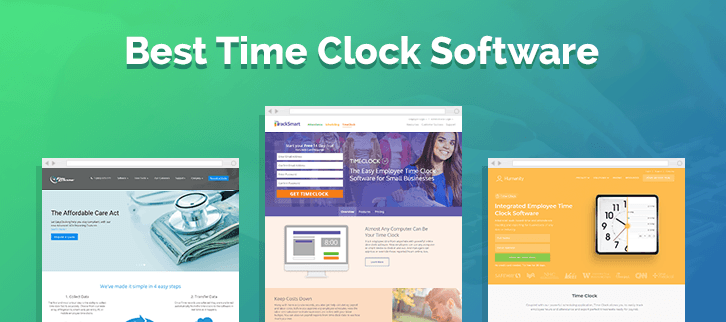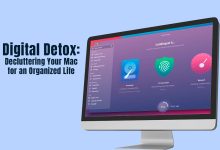Time Simplified: Choosing the Best Simple Time Clock Software

They say time is money, and in today’s fast-paced world, finding the best simple time clock software can save you both. But with so many options out there, how do you choose?
Well, fear not, because we’ve got you covered. In this discussion, we will explore the key features to look for in time clock software, evaluate user-friendliness and compatibility, discuss integration capabilities with payroll and HR systems, explore customization options, delve into security and data protection measures, and even provide real-world examples of successful implementation.
So, whether you’re a small business owner or an HR professional, get ready to simplify your time management with the best time clock software for your needs.
Key Takeaways
- Simple time clock software streamlines processes and eliminates errors in tracking employee hours.
- Key features to consider include ease of use, accurate time tracking, integration options, and reporting capabilities.
- Compatibility and integration with devices, operating systems, and payroll/HR systems are important factors to consider.
- Customization options allow businesses to tailor the time tracking system to their specific needs, enhancing reporting capabilities and user experience.
Importance of Simple Time Clock Software
Using simple time clock software is essential for efficient and accurate tracking of employee hours. When you rely on manual methods such as paper timesheets or spreadsheets, there’s a higher risk of errors and discrepancies in recording employee work hours. With simple time clock software, you can streamline the entire process and eliminate the need for manual calculations.
By implementing time clock software, you can ensure that your employees’ hours are accurately recorded and calculated. This not only benefits your employees by providing them with an accurate record of their work hours, but it also benefits your organization by ensuring that you’re paying your employees for the hours they’ve worked.
In addition to accurate tracking, simple time clock software also allows for easy access to employee time data. You can quickly generate reports and analyze the data to gain insights into employee productivity, attendance patterns, and project costs. This information can help you make informed decisions and identify areas for improvement within your organization.
Furthermore, time clock software can help you comply with labor laws and regulations. It can automatically calculate overtime, track breaks, and ensure that your employees are receiving the appropriate compensation for their work.
Key Features to Look for in Time Clock Software
To ensure that you choose the best time clock software for your organization, it’s important to look for key features that will meet your specific needs and requirements. Here are four essential features to consider:
- Ease of use: Look for software that has an intuitive interface and simple navigation. You want a system that’s easy for both employees and administrators to use, without requiring extensive training or technical knowledge.
- Time tracking capabilities: The software should provide accurate and reliable time tracking, allowing employees to clock in and out easily. Look for features such as punch clock functionality, time card management, and the ability to track breaks and overtime.
- Integration options: Consider whether the software can integrate with other systems and tools that you use in your organization. This could include payroll software, HR management systems, or scheduling tools. Seamless integration will save you time and effort in managing your workforce.
- Reporting and analytics: Look for software that offers robust reporting capabilities. This will allow you to generate detailed reports on employee attendance, hours worked, and other important metrics. Having access to this data will help you make informed decisions and better manage your workforce.
Evaluating User-Friendliness of Time Clock Software
Consider the ease of navigation and intuitive interface when evaluating the user-friendliness of time clock software. The whole point of using time clock software is to simplify and streamline the process of tracking employee hours. Therefore, it’s crucial that the software you choose is easy to use and navigate.
When evaluating the user-friendliness of time clock software, pay attention to how intuitive the interface is. A good time clock software should have a clear and organized layout, with easy-to-understand icons and labels. It should be easy for both employees and administrators to find the features they need without any confusion or frustration.
Additionally, consider the ease of navigation within the software. Can you easily switch between different functionalities? Is it easy to access reports and view employee time data? These are important questions to ask when evaluating user-friendliness.
Furthermore, consider the learning curve associated with the software. Is it easy for new users to figure out how to use the software without extensive training? The ideal time clock software should be intuitive enough that users can quickly grasp how to navigate and use its features.
Compatibility With Different Devices and Operating Systems
Ensure that the time clock software you choose is compatible with a variety of devices and operating systems. This is crucial to ensure seamless integration and smooth functioning of the software across all your devices and platforms. Here are some key factors to consider:
- Device Compatibility: Look for a time clock software that works well on different types of devices, such as desktop computers, laptops, tablets, and smartphones. This will allow your employees to easily access and use the software on their preferred devices, increasing convenience and productivity.
- Operating System Compatibility: Make sure the software is compatible with various operating systems, such as Windows, macOS, iOS, and Android. This ensures that your employees can use the software regardless of the devices they have and the operating systems they prefer.
- Web-Based Solution: Opt for a web-based time clock software that can be accessed through a web browser. This eliminates the need for installing specific software on each device and allows for easy access from anywhere with an internet connection.
- Mobile App Support: Consider a time clock software that offers a dedicated mobile app. This provides additional flexibility and convenience, allowing employees to clock in and out on the go using their smartphones.
Integration Capabilities With Payroll and HR Systems
When choosing a simple time clock software, it’s important to evaluate its integration capabilities with payroll and HR systems. Integration with these systems can streamline processes, minimize errors, and save time for your HR and payroll teams. Look for a time clock software that offers seamless integration with popular payroll and HR systems such as ADP, Paychex, QuickBooks, or Gusto. This will allow for the automatic transfer of time and attendance data from the time clock software to the payroll and HR systems, eliminating the need for manual data entry and reducing the risk of errors.
Integration capabilities also enable the software to pull employee data, such as names, job titles, and departments, from the HR system, making it easier to set up and manage employee profiles within the time clock software. Additionally, the integration can enable the software to sync with the payroll system, ensuring accurate calculation of employee hours and wages for payroll processing.
Furthermore, integration with payroll and HR systems provides real-time visibility into employee attendance and time-off balances, allowing HR and management to make informed decisions regarding scheduling and staffing. It also simplifies the process of generating payroll reports and ensures that employees are paid accurately and on time.
Customization Options for Time Tracking and Reporting
To enhance your time tracking and reporting capabilities, explore the customization options available in the time clock software. With the right customization features, you can tailor your time tracking system to fit the unique needs of your business.
Here are four customization options that can help you optimize your time tracking and reporting process:
- Customizable timesheets: Personalize your timesheets to match your preferred format. Whether you need daily, weekly, or monthly views, a customizable timesheet allows you to view and track time in a way that makes sense for your workflow.
- Flexible reporting: Customize your reports to focus on the data that matters most to you. Whether it’s individual employee productivity, project timelines, or overall team performance, flexible reporting options enable you to generate insights that align with your specific goals.
- Customizable notifications: Stay informed and on top of your time tracking with customizable notifications. Set up reminders and alerts for upcoming deadlines, missed punches, or overtime hours to ensure your team stays accountable and on track.
- Personalized dashboards: Create personalized dashboards that provide a snapshot of your time tracking data. Whether you prefer visual charts or detailed tables, customizable dashboards allow you to have a clear overview of your team’s performance at a glance.
Security and Data Protection Measures
Protect your sensitive data and ensure the security of your time tracking system with robust security and data protection measures. When choosing a simple time clock software, it’s crucial to prioritize the safety of your data. Look for a system that offers strong encryption methods to protect your information from unauthorized access. This includes secure socket layer (SSL) encryption for data transmission and encryption at rest for stored data.
Another important security measure to consider is user authentication. Ensure that the software provides options for strong password policies and supports two-factor authentication. This will add an extra layer of security by requiring users to verify their identity through a second method, such as a unique code sent to their mobile device.
In addition to encryption and authentication, the software should have regular data backups and disaster recovery capabilities. This ensures that your data is protected in case of any unexpected events, such as hardware failures or natural disasters.
Furthermore, it’s essential to choose a time clock software that complies with industry security standards and regulations, such as the General Data Protection Regulation (GDPR) or the Health Insurance Portability and Accountability Act (HIPAA). These regulations set guidelines for data protection and privacy, ensuring that your sensitive information is handled securely.
Cost and Pricing Models of Time Clock Software
To evaluate the cost and pricing models of time clock software, consider the following factors:
- Budget: Determine how much you’re willing to spend on a time clock software. Consider the long-term value it will provide to your business and choose a solution that fits within your financial capabilities.
- Features: Look for a software that offers the features you need at a reasonable price. Don’t pay for unnecessary bells and whistles that you won’t use. Focus on the essential functionalities that will streamline your time tracking process.
- Scalability: Consider the future growth of your business. Choose a software that can accommodate your expanding needs without incurring additional costs. Look for solutions that offer flexible pricing plans or allow you to upgrade as your business grows.
- Support and Maintenance: Ensure that the cost of support and maintenance is included in the pricing model. A reliable and responsive support team is essential to address any issues that may arise during implementation or ongoing usage.
Real-World Examples of Successful Time Clock Software Implementation
Many businesses have successfully implemented time clock software to streamline their employee tracking process and improve efficiency. One such example is ABC Corporation, a manufacturing company with over 500 employees.
Before implementing time clock software, ABC Corporation relied on manual punch cards to track employee hours. This led to errors in recording and calculating employee hours, resulting in payroll discrepancies and wasted time. However, after implementing time clock software, employees now use biometric time clocks to accurately record their hours.
The software automatically tracks and calculates employee hours, eliminating the need for manual data entry and reducing errors. This hasn’t only improved the accuracy of payroll processing but has also saved HR personnel countless hours of administrative work.
Another success story is XYZ Retail, a chain of retail stores. Prior to using time clock software, XYZ Retail struggled with managing employee schedules and tracking attendance.
By implementing time clock software with integrated scheduling capabilities, XYZ Retail has been able to streamline their scheduling process and ensure accurate attendance tracking. This has resulted in better workforce management and improved customer service.
These real-world examples highlight the positive impact that time clock software can have on businesses of all sizes and industries.
Conclusion
In conclusion, when choosing the best simple time clock software, it’s important to consider key features, user-friendliness, compatibility, integration capabilities, customization options, security measures, and cost.
By carefully evaluating these factors and considering real-world examples of successful implementation, you can make an informed decision and find a time clock software that meets your needs and simplifies your time tracking and reporting processes.





